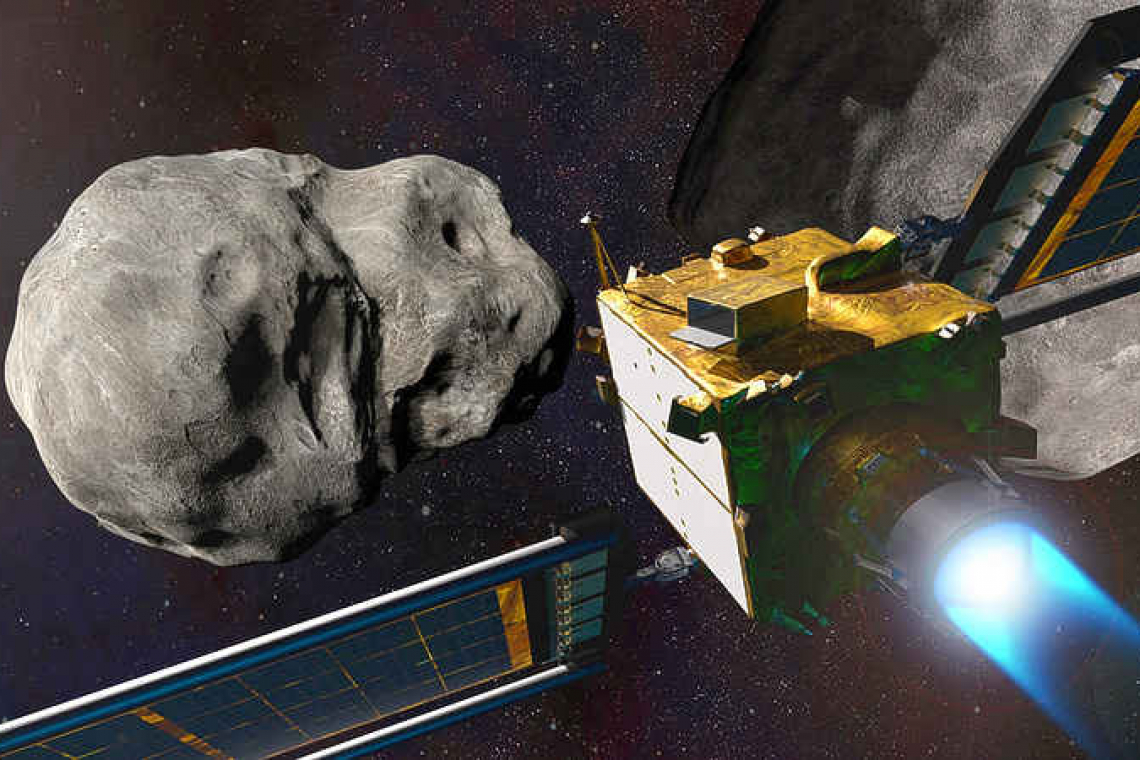HOUSTON--NASA's DART spacecraft successfully slammed into a distant asteroid at hypersonic speed on Monday in a test of the world's first planetary defense system, designed to prevent a potential doomsday meteorite collision with Earth.
Humanity's first attempt to alter the motion of an asteroid or any celestial body played out in a NASA webcast from the mission operations center outside Washington, D.C., 10 months after DART was launched.
The livestream showed images taken by DART's camera as the cube-shaped "impactor" vehicle, no bigger than a vending machine with two rectangular solar arrays, streaked into the asteroid Dimorphos, about the size of a football stadium, at 7:14 p.m. EDT some 6.8 million miles (11 million km) from Earth.
The mission was devised to determine whether a spacecraft is capable of changing the trajectory of an asteroid through sheer kinetic force, nudging it off course just enough to keep our planet out of harm's way. Whether the experiment succeeded beyond accomplishing its intended impact will not be known until further ground-based telescope observations of the asteroid next month. But NASA officials hailed the immediate outcome of Monday's test, saying the spacecraft achieved its purpose.
"NASA works for the benefit of humanity, so for us it’s the ultimate fulfillment of our mission to do something like this - a technology demonstration that, who knows, some day could save our home," NASA Deputy Administrator Palm Melroy, a retired astronaut, said minutes after the impact.
DART, launched by a SpaceX rocket in November 2021, made most of its voyage under the guidance of NASA's flight directors, with control handed over to an autonomous on-board navigation system in the final hours of the journey. Monday evening's bullseye impact was monitored in near real time from the mission operations center at the Johns Hopkins University Applied Physics Laboratory in Laurel, Maryland.
Cheers erupted from the control room as second-by-second images of the target asteroid, captured by DART's onboard camera, grew larger and ultimately filled the TV screen of NASA's live webcast just before the signal was lost, confirming the spacecraft had crashed into Dimorphos. DART's celestial target was an oblong asteroid "moonlet" about 560 feet (170 meters) in diameter that orbits a parent asteroid five times larger called Didymos as part of a binary pair with the same name, the Greek word for twin.
Neither object presents any actual threat to Earth, and NASA scientists said their DART test could not create a new hazard by mistake. Dimorphos and Didymos are both tiny compared with the cataclysmic Chicxulub asteroid that struck Earth some 66 million years ago, wiping out about three-quarters of the world's plant and animal species including the dinosaurs.
Smaller asteroids are far more common and present a greater theoretical concern in the near term, making the Didymos pair suitable test subjects for their size, according to NASA scientists and planetary defense experts. A Dimorphos-sized asteroid, while not capable of posing a planet-wide threat, could level a major city with a direct hit.







